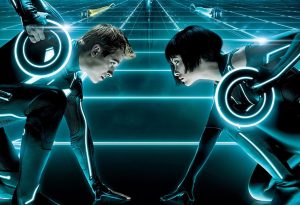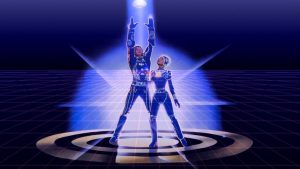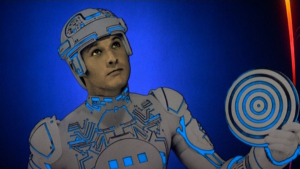Tron, an epic story of civil war between tiny cyber-people living within computer programs, has never been an easy concept to sell to general audiences: not back in 1982, when the original film became a financial disappointment and a strange, yet admirable, cult classic; not in 2010, when the sequel turned a profit but fell short of fan expectations, giving the franchise a bad name; and not today, in 2020, a decade since the second film’s release, when it was announced that director Garth Davis would be teaming up with Jared Leto to produce the third film in the series. About a month ago, it was reported by The DisInsider that a third film might be in the works: these new details confirm that.

So no, not quite the total reboot that many of us had been hoping for: Tron 3, as it’s being referred to (though there’s a possibility the title is Tron: Ares, which is…something), will indeed follow the events of Tron: Legacy, the poorly-written sequel that tarnished the brand’s reputation and halted the franchise dead in its tracks for years. That means we will probably be forced to resume where we left off with our protagonist, the average straight white guy played by Garret Hedlund, whose character name I’ve completely forgotten despite having watched this film extremely recently (if I had to guess, it’s probably Jake; it’s always Jake), and Olivia Wilde’s Quorra, a Grid resident who escaped from the destruction of the cyber world at the end of the second film and now lives in the real world. Jeff Bridges will likely return as both Kevin Flynn and his villainous clone Clu, because there’s no way either one actually died in that blinding flash of white light, and Tron himself is probably due for a return, having finally overridden his malevolent programming before crashing into water and definitely not drowning. Bruce Boxleitner will probably be back, and Cindy Morgan, as before, will probably be left out of everything.

But despite accumulating so much star power, the people over at Disney apparently felt like a little more was needed – so they settled upon Jared Leto. Leto, an Academy Award winner, has been circling a lead role in the Tron franchise for years, long before this third film was greenlit, but it appears to be official as of today: he will star, in an as yet undisclosed role. Nobody appears to be very happy about this news, and Disney would probably be wise to take note of the general dissatisfaction with this peculiar casting before they go through with it, but they’ve never been very wise when it comes to managing the Tron brand, so this latest misstep is hardly a surprise. Leto is not a bad actor, by any means, but the horror stories about his particular form of method acting have done a lot to ruin his reputation, and have already sparked a deluge of fair complaints on social media. Thus, what could have been a joyous occasion for Tron fans has now been almost irreparably tainted.

Fortunately, there is a little bit of good news to come out of this. Though it’s a less flashy headline than Jared Leto’s attachment to Tron 3, a director has also been selected for the third film. Garth Davis, an indie director best known for his Oscar-nominated 2016 drama Lion, “aggressively pursued the job”, according to Deadline, and seems to have succeeded in his mission. Whether Davis will be able to combine visual spectacle with top-notch storytelling remains to be seen, but it’s at least a welcome change of pace for the franchise, which needs to find some way to achieve that balance again. Tron: Legacy tried to use dazzling blue CGI (seriously, everything in that movie is neon blue: it’s pretty at first, but it gets old real fast) and nostalgic music to disguise its heavy reliance on stale tropes, one-dimensional characters, and meager use of both Cillian Murphy and Michael Sheen’s talents, but fans saw right through it.
So what do you think? Are you excited for Tron 3? More so or less so because Jared Leto is attached to star? Share your thoughts, theories and opinions in the comments below!


